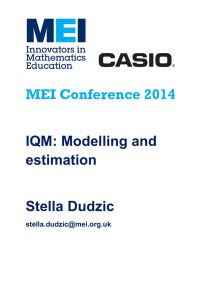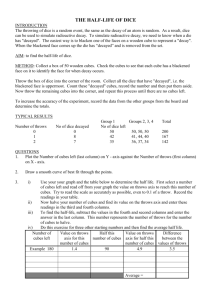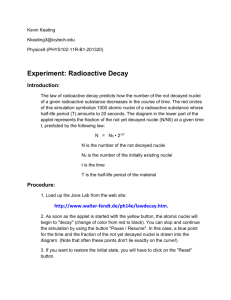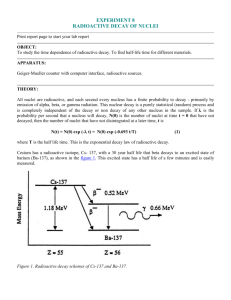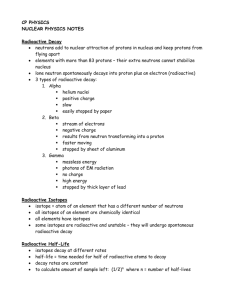Radioactive Decay Simulation with Dice Experiment
advertisement
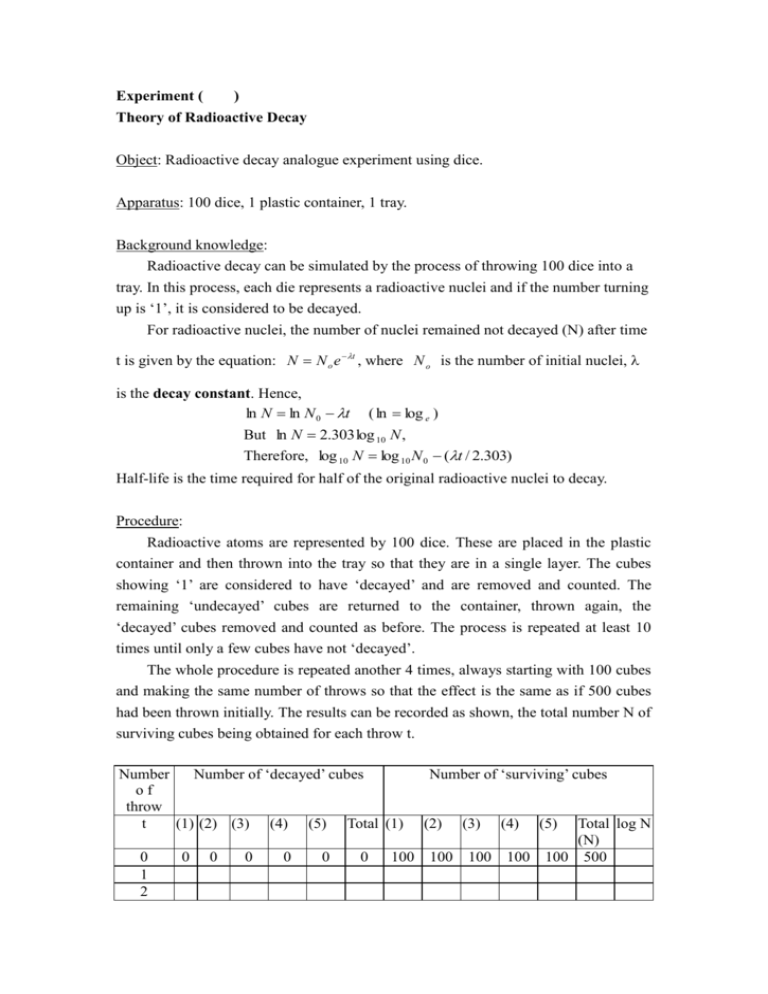
Experiment ( ) Theory of Radioactive Decay Object: Radioactive decay analogue experiment using dice. Apparatus: 100 dice, 1 plastic container, 1 tray. Background knowledge: Radioactive decay can be simulated by the process of throwing 100 dice into a tray. In this process, each die represents a radioactive nuclei and if the number turning up is ‘1’, it is considered to be decayed. For radioactive nuclei, the number of nuclei remained not decayed (N) after time t is given by the equation: N N o e t , where N o is the number of initial nuclei, is the decay constant. Hence, ln N ln N 0 t ( ln log e ) But ln N 2.303 log 10 N , Therefore, log 10 N log 10 N 0 (t / 2.303) Half-life is the time required for half of the original radioactive nuclei to decay. Procedure: Radioactive atoms are represented by 100 dice. These are placed in the plastic container and then thrown into the tray so that they are in a single layer. The cubes showing ‘1’ are considered to have ‘decayed’ and are removed and counted. The remaining ‘undecayed’ cubes are returned to the container, thrown again, the ‘decayed’ cubes removed and counted as before. The process is repeated at least 10 times until only a few cubes have not ‘decayed’. The whole procedure is repeated another 4 times, always starting with 100 cubes and making the same number of throws so that the effect is the same as if 500 cubes had been thrown initially. The results can be recorded as shown, the total number N of surviving cubes being obtained for each throw t. Number Number of ‘decayed’ cubes of throw t (1) (2) (3) (4) (5) Total (1) 0 1 2 0 0 0 0 0 0 Number of ‘surviving’ cubes (2) (3) (4) (5) Total log N (N) 100 100 100 100 100 500 Discussion: 1. Why is it appropriate to simulate the radioactive decay process by throwing dies in the experiment? 2. Plot a graph of N against t. 3. From your graph, find the ‘half-life’ of the decay. 4. Plot a graph log10N against t. 5. From the shape of the graph, what conclusion can you draw to the radioactive decay?

